What’s the probability that a random triangle is obtuse?
or:
What the heck is a random triangle, anyway?
Clayton Shonkwiler
Lewis Carroll's Pillow Problem #58
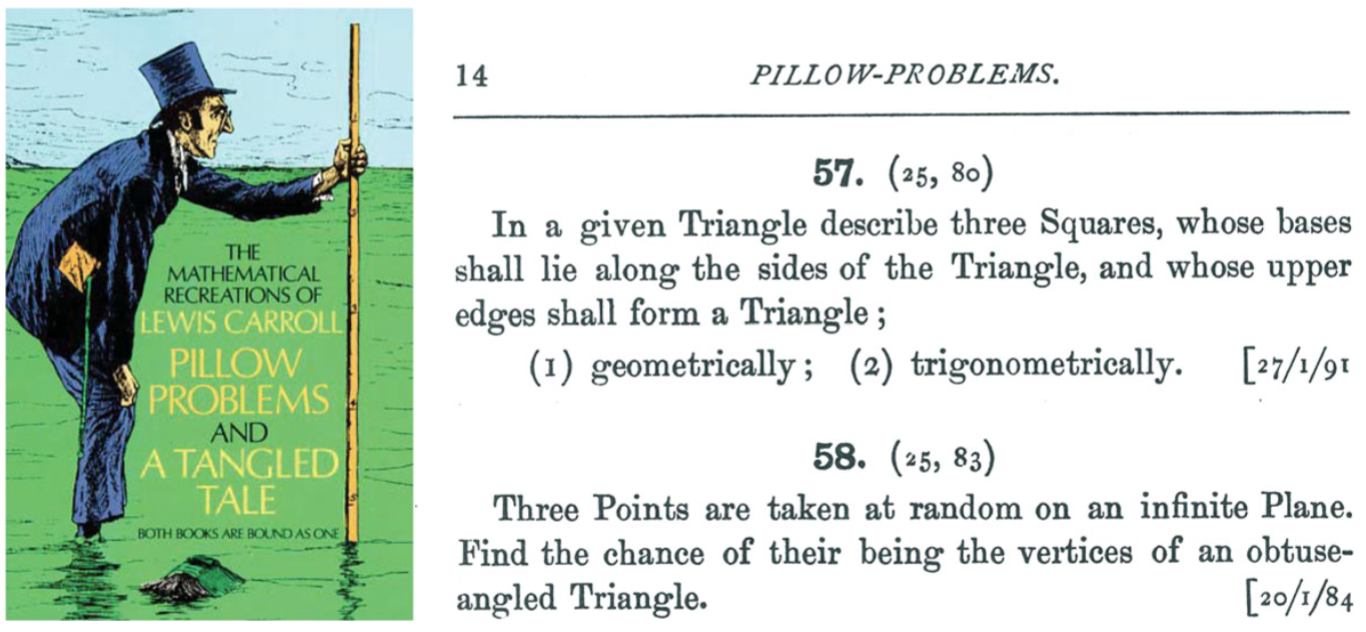
Random Points on an Infinite Plane
Probability \(p\)
\(p\)
\(p\)
\(p\)
\(p\)
Uh oh!
In Fact...
There is no way to choose points randomly in the plane so that the probability that a point lies in a region depends only on the size of the region.
Fancier Version
The uniform measure on the plane is not a probability measure.
Gaussians to the Rescue?
One way to choose points randomly in the plane is according to the Gaussian (normal) distribution.
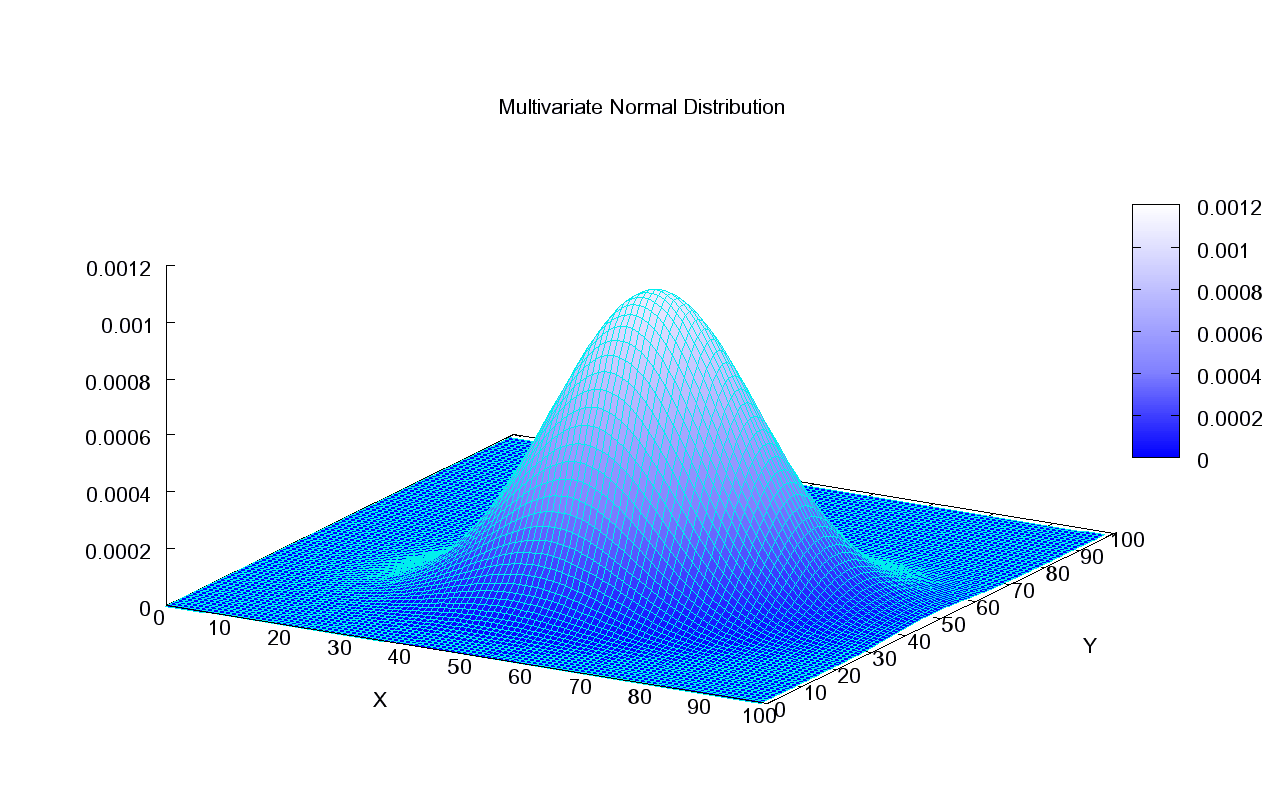
Proposition: Suppose the vertices \((x_1,y_1),(x_2,y_2),(x_3,y_3)\) of the triangle are chosen independently from the standard 2-variable Gaussian distribution. Then
\(\mathbb{P}(\text{obtuse})=\frac{3}{4}\)
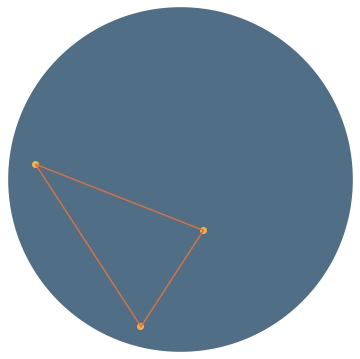
Choose three vertices uniformly in the disk:
\(\mathbb{P}(\text{obtuse})=\frac{9}{8}-\frac{4}{\pi^2}\approx 0.7197\)
Restricted Domain?

Choose three vertices uniformly in the square:
\(\mathbb{P}(\text{obtuse})=\frac{97}{150}-\frac{\pi}{40}\approx 0.7252\)
Random Triangles?
Is Carroll’s question really about choosing random points, or is it actually about choosing random triangles?
How would you choose a triangle “at random”?
Key observation: Obtuseness is scale-invariant.
Angles?!
Remember from Geometry that three angles \((\theta_1,\theta_2,\theta_3)\) determine a triangle up to similarity (AAA).
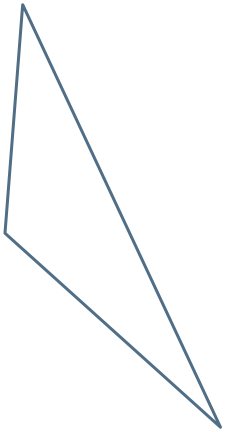
\(\theta_1\)
\(\theta_2\)
\(\theta_3\)
What are the restrictions on the \(\theta_i\)?
\(\theta_1+\theta_2+\theta_3=\pi\)
\(0<\theta_1, 0 < \theta_2, 0<\theta_3\)
and
The Triangle of Triangles
\(\theta_1+\theta_2+\theta_3=\pi\)
\(0<\theta_1, 0 < \theta_2, 0<\theta_3\)
and
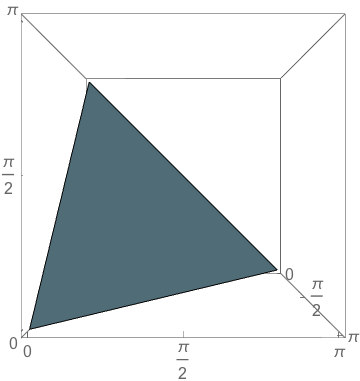
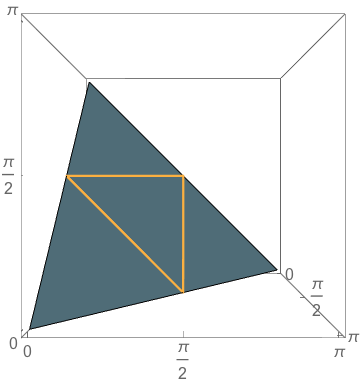
\(\theta_1=\pi/2\)
\(\theta_2=\pi/2\)
\(\theta_3=\pi/2\)
\(\mathbb{P}(\text{obtuse})=\frac{3}{4}\)
Side Lengths?!
Remember the sidelengths \((a,b,c)\) uniquely determine a triangle (SSS).
Obtuseness is scale-invariant, so pick a perimeter \(P\) and we have \(a+b+c=P\).
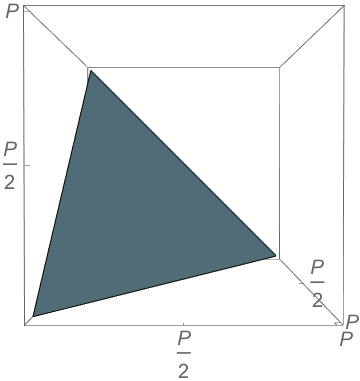
Problem
Not all points in the simplex correspond to triangles
\(b+c<a\)
\(a+b<c\)
\(a+c<b\)
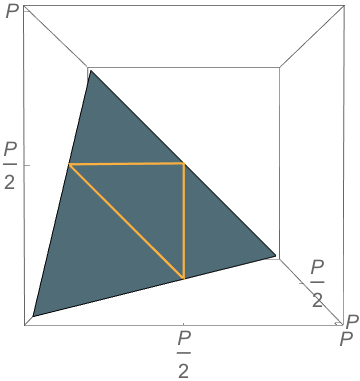
Yet Another Pillow Problem Answer
\(\mathbb{P}(\text{obtuse})=9-12\ln 2 \approx 0.68\)
\(b^2+c^2=a^2\)
\(a^2+b^2=c^2\)
\(a^2+c^2=b^2\)
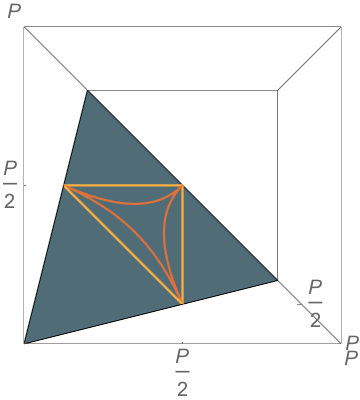
Carroll’s Answer
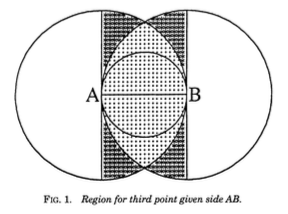
Suppose \(AB\) is the longest side. Then
\(\mathbb{P}(\text{obtuse})=\frac{\pi/8}{\pi/3-\sqrt{3}/4} \approx 0.64\)
But if \(AB\) is the second longest side,
\(\mathbb{P}(\text{obtuse}) = \frac{\pi/2}{\pi/3+\sqrt{3}/2} \approx 0.82\)

— Stephen Portnoy, Statistical Science 9 (1994), 279–284
Random Triangles...?
Transitive Transformation Group
To choose objects from a collection at random, there must be some sense in which the objects are indistinguishable from each other.
Or: there should be some way of transforming any object in the collection into any other object.
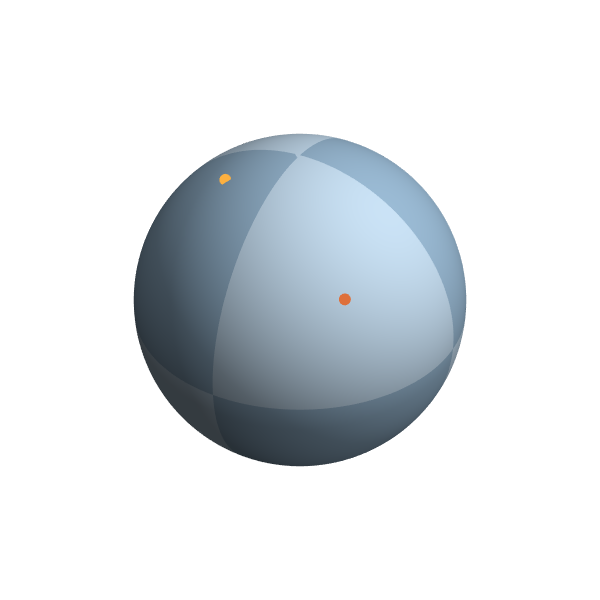
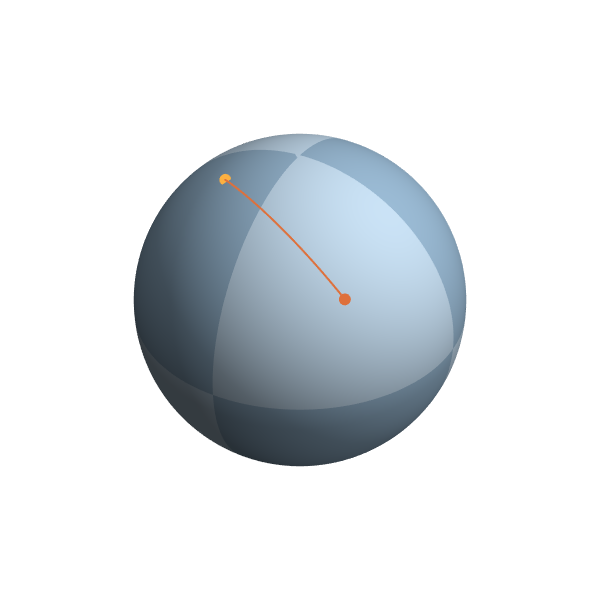
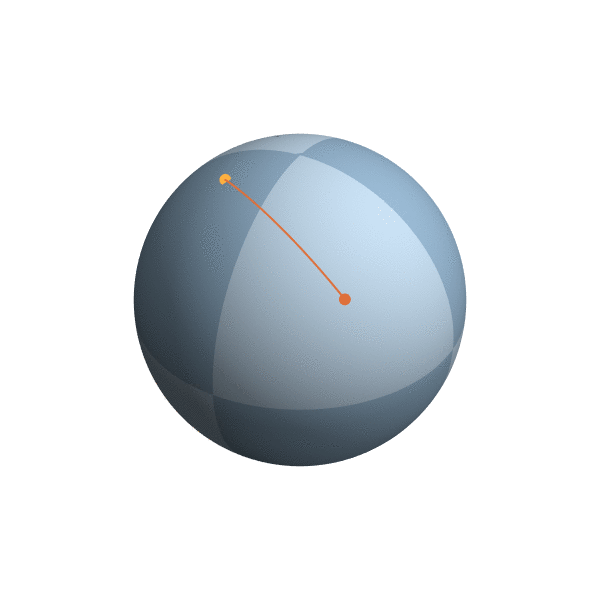
The collection of transformations is called a transformation group. The fact that you can transform any object into any other object means the group acts transitively. Take MATH 366 for more!
Haar Measure
Given a transitive group of transformations acting on a collection of objects, there is a natural way to assign a size to any subset of the objects: just take the average of the sizes of all transformations of the subset.
This way of assigning sizes to subsets is called Haar measure.
We can then choose objects randomly according to the following rule:
The probability that a randomly chosen object will be in any given subset is proportional to the size of the subset.
Back to Triangles
Let \(s=\frac{1}{2}(a+b+c)\) and define
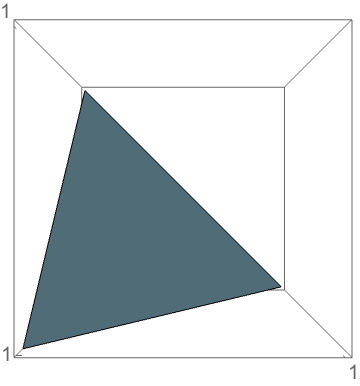
Note: It’s convenient to choose \(s=1\).
\(s_a=s-a, \quad s_b = s-b, \quad s_c = s-c\)
Then
\(s_a+s_b+s_c=3s-(a+b+c)=3s-2s=s\)
and the triangle inequalities become
\(s_a>0, \quad s_b > 0, \quad s_c > 0\)
But there's still no transitive transformation group!
Take Square Roots!
Consider \((x,y,z)\) so that
\(x^2=s_a=1-a, \quad y^2=s_b=1-b, \quad z^2=s_c=1-c\)
The unit sphere is a \(2^3\)-fold cover of triangle space
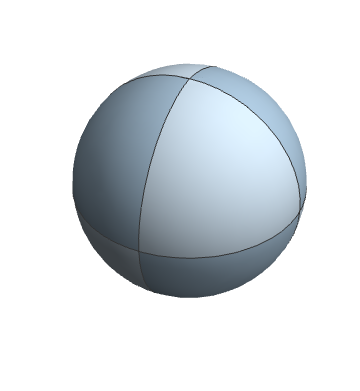
The Transitive Group
The rotations are natural transformations of the sphere, and the corresponding action on triangles is natural.
\(c=1-z^2\) fixed
\(z\) fixed
\(C(\theta) = (\frac{z^2+1}{2}\cos 2\theta, z \sin 2\theta)\)
The equal-area-in-equal-time parametrization of the ellipse

A More Complicated Rotation
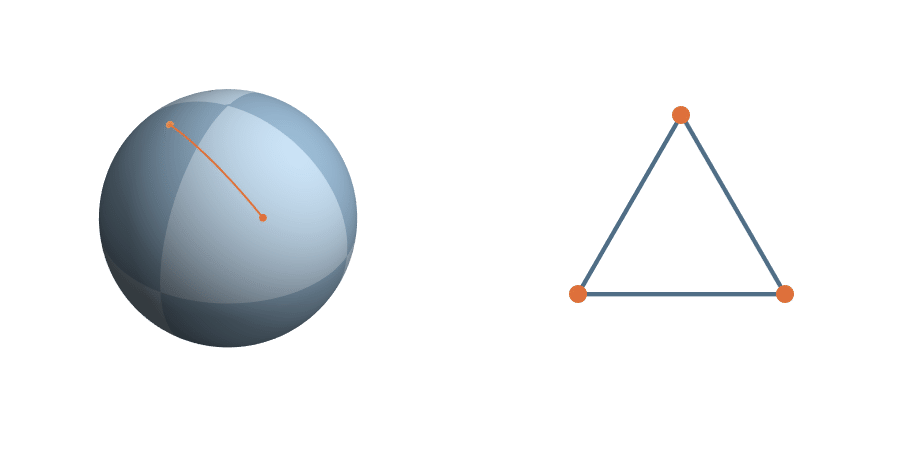
Right Triangles
The right triangles are exactly those satisfying
\(a^2+b^2=c^2\) or \(b^2+c^2=a^2\) or \(c^2+a^2=b^2\)
Since \(a=1-x^2\), etc., the right triangles are determined by the quartic
\((1-x^2)^2+(1-y^2)^2=(1-z^2)^2\) or ...
\(x^2 + x^2y^2 + y^2 = 1\), etc.
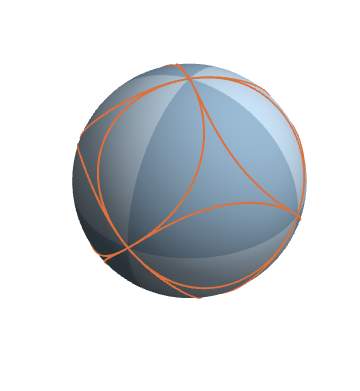
Obtuse Triangles
\(\mathbb{P}(\text{obtuse})=\frac{1}{4\pi}\text{Area} = \frac{24}{4\pi} \iint_R d\theta dz\)

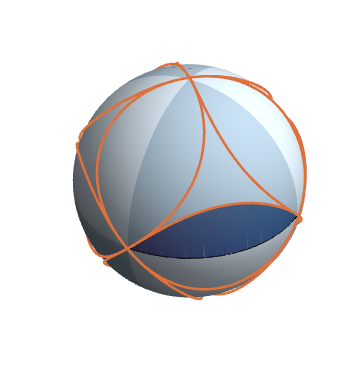
But now \(C\) has the parametrization
And the integral reduces to
Solution to the Pillow Problem
By Green’s Theorem

\(\frac{6}{\pi} \iint_R d\theta dz=\frac{6}{\pi}\oint_{\partial R}z d\theta = \frac{6}{\pi}\left(\int_{z=0} zd\theta + \int_C zd\theta \right)\)
\(\left(\sqrt{\frac{1-y^2}{1+y^2}},y,y\sqrt{\frac{1-y^2}{1+y^2}}\right)\)
\(\frac{6}{\pi} \int_0^1 \left(\frac{2y}{1+y^4}-\frac{y}{1+y^2}\right)dy\)
Our Answer
Theorem [w/ Cantarella, Needham, Stewart]
Thinking of random triangles as points chosen uniformly on the sphere, the probability that a random triangle is obtuse is
\(\frac{3}{2}-\frac{3\ln 2}{\pi}\approx0.838\)
Generalization
For \(n>3\), the sidelengths do not uniquely determine an \(n\)-gon, so the previous approach doesn‘t obviously generalize.
Key Observation: Choosing a point on the sphere is equivalent to choosing the perpendicular plane.
\(\vec{p}=\vec{a} \times \vec{b}\)
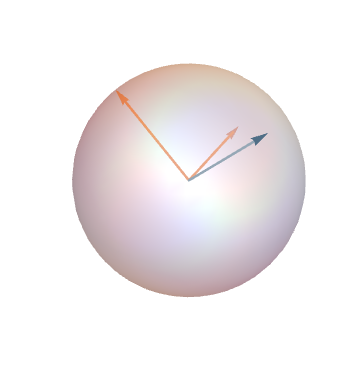
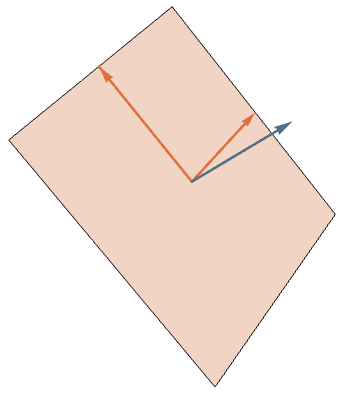
Planes and Polygons
In general, we can identify the collection of planar \(n\)-gons with the collection of 2-dimensional planes through the origin in \(n\)-dimensional space \(\mathbb{R}^n\).
This space is called the Grassmann manifold or
Grassmannian \(G_2(\mathbb{R}^n)\).
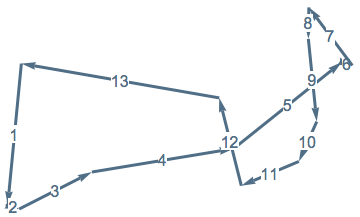
Sylvester’s Four Point Problem

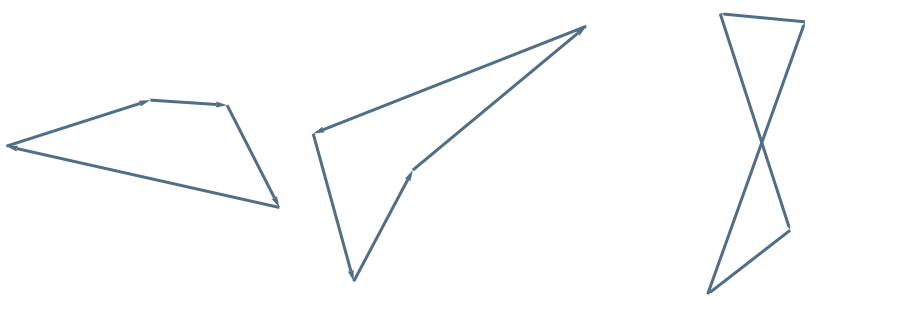
convex
reflex/reentrant
self-intersecting
Some Answers
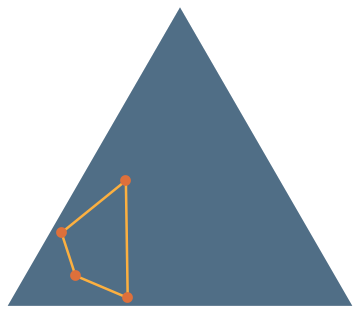
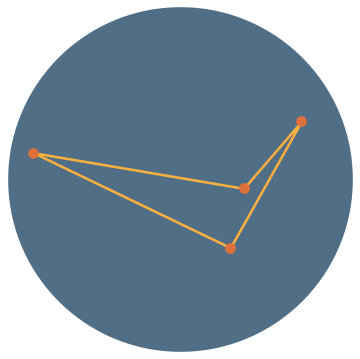
\(\mathbb{P}(\text{reflex})=\frac{1}{3}\)
\(\mathbb{P}(\text{reflex})=\frac{35}{12\pi^2}\approx 0.296\)
Theorem [Blaschke]
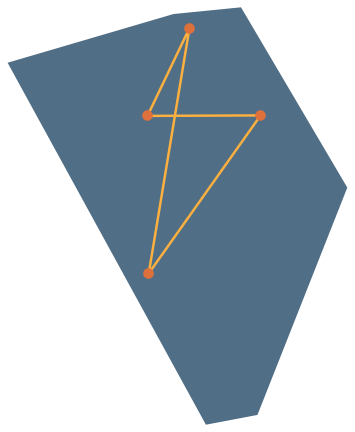
\(\frac{35}{12\pi^2}\leq\mathbb{P}(\text{reflex})\leq\frac{1}{3}\)
Our Answer
Theorem [w/ Cantarella, Needham, Stewart]
Under the correspondence of quadrilaterals with planes in \(\mathbb{R}^4\), each of the three classes of quadrilaterals occurs with equal probability. In particular, \(\mathbb{P}(\text{reflex})=\frac{1}{3}\).
More generally...
Theorem [w/ Cantarella, Needham, Stewart]
The probability that a random \(n\)-gon is convex is \(\frac{2}{(n-1)!}\).
Polygons in Space
There is a version of this story for \(n\)-gons in space as well.
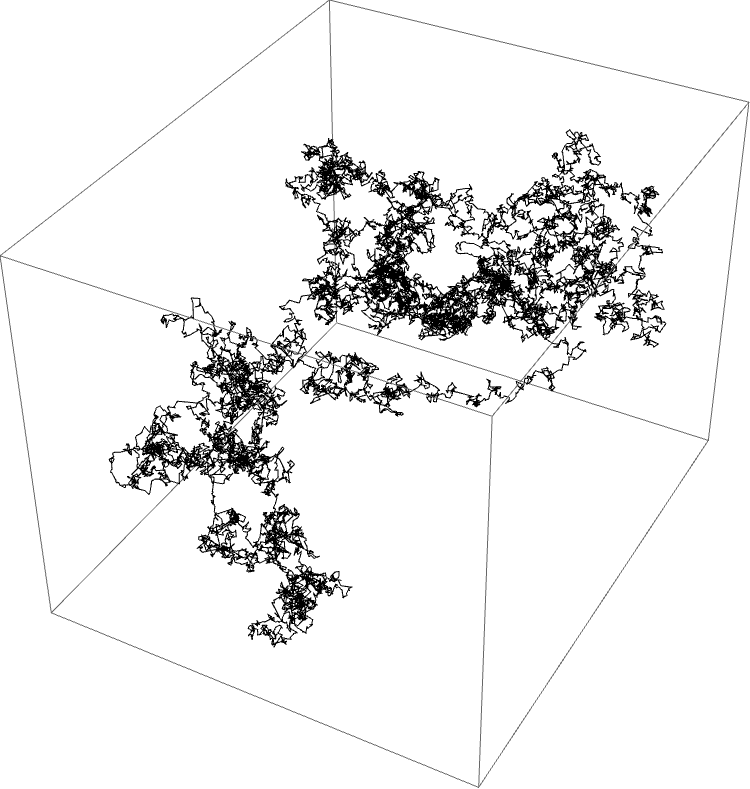
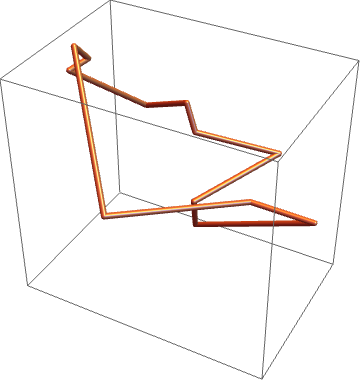
Polygons in space provide a foundational theoretical and computational model for ring polymers like bacterial DNA.
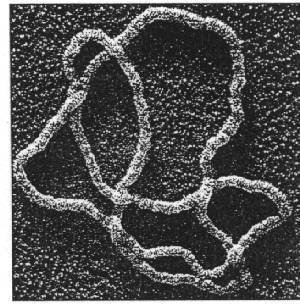
Thank you for listening!
Square Roots of Angles
It turns out that if we take square roots of angles instead, we get:
\(\mathbb{P}(\text{obtuse}) = \frac{4-2\sqrt{2}}{\sqrt{\pi}} \approx 0.661\)
But this approach doesn’t seem to generalize nearly as well as taking square roots of edgelengths.
